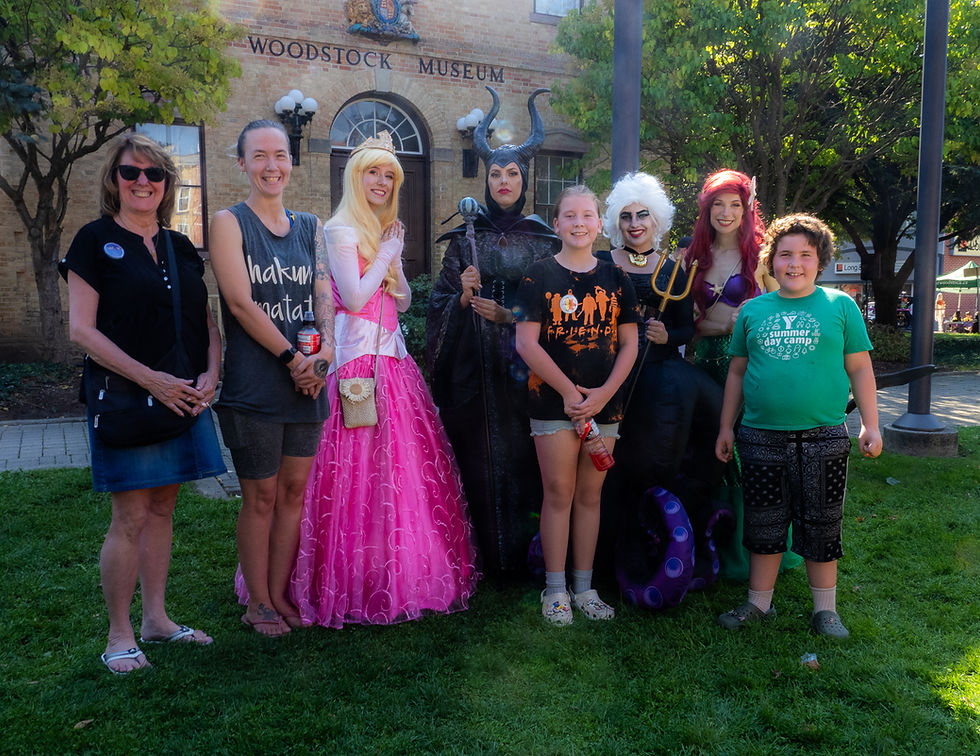Woodstock resident promoting local connections to Miss Supertest story
- Jeff Tribe

- Oct 9
- 4 min read

Woodstock’s Don Gaudier promotes the Miss Supertest III story, how contributions from the Wilson family from Ingersoll, the Thompson family from London and Embro-area driver Bob Hayward (the picture held by Gaudier) combined in Canada, ending 39 years of American Harmsworth Cup domination. (Jeff Tribe Photo).
Jeff Tribe, Post Correspondent
Few things get a Canadian’s competitive juices flowing like a good, international rivalry - particularly when it involves the Americans.
Think Connor McDavid going top shelf in overtime in the face of ignorant and insulting 51st state rhetoric, Hayley Wickenheiser offering to sign the Canadian flag her opponents reputedly had on their dressing room floor, the Blue Jays defeating the Atlanta Braves and a cadre of questionable umpire’s calls in 1992, or Donovan Bailey leaving Michael Johnson in his 100-metre dust at the Olympics, and again in a 150-metre challenge.
Yes, Donovan was ready to run that race again and kick his butt one more time.
Woodstock resident Don Gaudier is striving to bring attention to an arguably lesser-known but also important triumph, and the crucial roles Embro-area chicken farmer Bob Hayward and an Ingersoll-based company owned by the Wilson family played in flying the Canadian flag a little higher.
“I’m trying to spread the word,” said Gaudier. “That was a big deal back then.”
The Harmsworth Cup, known more familiarly as the Harmsworth Trophy, was the first international award for modern motorboat racing between nations. Founded by Alfred Charles William Harmsworth in 1903, the initial race was won by an English boat averaging just under 20 miles per hour.
France took the cup in 1904, Britain regained it in 1905, and defended it in 1906, with the United States taking its first title in 1908. The British and Americans would battle for honours in the next five years, the former going back-to-back in 1912 and 1913. Following a World War I-imposed break, the Americans kicked off a close to four-decade run of domination through irregularly scheduled events between 1920 and 1956.
There was no prize money involved, says Gaudier, simply pride in competition and ultimately, victory.
“Back then, it was the prestige of winning.”
The Wilson family, owners of Ingersoll Machine and Tool in that community, entered the fray with the Miss Canada I-IV series of racing boats from 1930-50. Their involvement ended, says Gaudier, with a gearbox shattering at high speed on the Bay of Picton. The subsequent sale of Miss Canada IV to the founder of London-based Supertest Petroleum, Gordon Thompson and his son Jim, resulted in the boat being renamed Miss Supertest I and ultimately sourcing Hayward as driver.
Hayward was a chicken farmer from just south of Embro, said Gaudier, who raced in a dragster of his own construction.
“Bob loved his speed.”
He would find that with his shift to motor boat racing, in what Gaudier described as an ‘unlimited’ class at the time, zero restrictions on construction or power plant.
“The biggest motor you could find, no rules and regulations.”
Following improvements through Miss Supertest II, the Thompson family would challenge the Americans’ 39-year lock on the Harmsworth Trophy in 1959 with Miss Supertest III. A 30-foot wooden craft powered by a Rolls-Royce Griffin V-12 aircraft engine pushing 2,800 HP, she was capable of speeds over 160 miles per hour on the straightaway, explained Gaudier.
The 1959 Harmsworth was held on the Detroit River, consisting of three 15-mile heats on a three-mile course.
Hayward and Miss Supertest III not only won the 1959 event, but they also defended the title in 1960 and 1961 near Picton on The Bay of Quinte, an unprecedented three-year run. Her average speed through the three years of the event was listed as 104.0, 116.3 and 100.2 miles per hour, respectively.
“They took the trophy away from the Americans who had it for 39 years,” said Gaudier.
Shortly after, Hayward was tragically killed while piloting Miss Supertest II on the Detroit River, following which the Supertest team retired from racing.
The combined feats of Hayward and the Thompson and Wilson families live on however in the memories of racing fans, in historical records and a series of honours bestowed. A cairn near the site of the Hayward farm recognizes Bob’s place in history. It includes induction into Canada’s Sports Hall of Fame in 1960, the Canadian Motorsport Hall of Fame in 2000, a YMCA in London named after him and a stretch of water in the Bay of Quinte known as Hayward Long Reach. Canada Post issued a 2011 stamp honouring Miss Supertest III along with her driver and builder and designer (Jim Thompson) on the 50th anniversary of the 1961 victory. Embro’s Thistle Theatre also presented a play based around Hayward’s life in 2024.
Gaudier has helped share the history, including supporting the Canadian Raceboat Hall of Fame (https://canadianraceboats.com) in Bracebridge, Ontario. The charitable not-for-profit entity opened in 2024 at 1512 Muskoka Road 118 W Township of Muskoka Lakes. It is open daily from 10 a.m. to 4 p.m. ’acting as a focal point and venue to house, celebrate and preserve the boats and stories’ from Canada’s race boat history.
Miss Supertest III has found her permanent home there, relocated from the Ontario Science Centre in Toronto, alongside her old rival, Guy Lombardo’s Tempo VII (Miss Detroit). The famous bandleader’s boat was defeated by Hayward in 1961, former competitors eventually finding a friendly home together. Miss Canada IV (Supertest I), displayed for 20 years at the Ingersoll Cheese Museum, is presently on display at the nearby Grace and Speed Discovery Centre in Gravenhurst.
Gaudier’s personal connection reaches back to his mother Jessie Masters babysitting Bob and Keith Hayward in 1935 around the birth of their sister, an ongoing fascination including an invitation to a Hayward memorial barbecue and meeting John Joseph Kelly, author of ‘Roostertail: The Miss Supertest Story’. Beyond that, he simply enjoys sharing the impressive details around an important portion of Canadian history.
“People should remember this era,” concluded Gaudier.




Comments